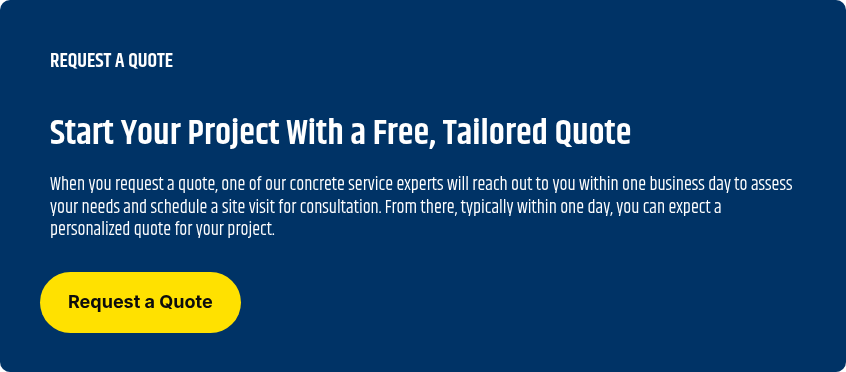Polished Concrete vs Epoxy: Which Flooring Solution Is Right for Your Space?
June 25th, 2025
3 min read
By Tom Dassie

When selecting a durable, long-lasting flooring option for commercial or industrial environments, two systems often rise to the top of the list: polished concrete vs epoxy. Both are popular choices in warehouses, manufacturing plants, retail spaces, and even modern offices—but they offer very different performance profiles, maintenance needs, and aesthetic qualities.
If you're comparing polished concrete vs epoxy, this blog will help you understand the key differences between them. We’ll break down where each flooring type excels, where they fall short, and how to choose the best option based on your facility’s specific needs.
What Is Polished Concrete?
Polished concrete is a flooring system created by mechanically grinding and honing a concrete slab to a smooth, glossy finish. The process includes chemical densifiers to harden the surface and improve resistance to wear, along with optional stain or guard treatments for added protection.
Key characteristics of polished concrete:
- No coatings—just refined and sealed concrete
- Glossy, matte, or satin finishes available
- Exposes the natural look of the concrete slab
- Minimal ongoing maintenance with routine cleaning
Because it uses the existing slab, polished concrete is often a cost-effective solution that delivers a clean, modern aesthetic.
What Is Epoxy Flooring?
Epoxy flooring is a resin-based coating applied over a prepared concrete surface. It typically consists of multiple layers, including a primer, body coat, and topcoat. Some systems include added aggregates or anti-slip finishes. Epoxy is known for its strong adhesion, resistance to chemicals, and smooth, sealed appearance.
Key characteristics of epoxy flooring:
- Creates a seamless, protective coating
- Can be customized with color, flakes, or textures
- High resistance to moisture, stains, and chemicals
- Available in high-build systems for added durability
Epoxy is often used in high-demand environments where performance and protection are essential.
Polished Concrete vs Epoxy: A Side-by-Side Comparison
Let’s take a closer look at how these two options stack up in the most common categories:
1. Durability
- Polished Concrete: Highly durable for foot traffic and light machinery, but more vulnerable to acid, oils, and chemicals.
- Epoxy: Excellent durability, especially with added aggregate or urethane topcoats; resists chemicals, abrasion, and spills.
2. Maintenance Requirements
- Polished Concrete: Requires dust mopping and periodic burnishing; no recoating necessary.
- Epoxy: Needs regular cleaning and may require reapplication or recoating every few years in high-wear areas.
3. Aesthetic Options
- Polished Concrete: Natural, modern look with varying levels of aggregate exposure and sheen.
- Epoxy: Highly customizable with color, textures, flakes, and gloss levels.
4. Chemical Resistance
- Polished Concrete: Minimal, unless treated with specialty guards; acids and harsh chemicals can etch or stain the surface.
- Epoxy: Stronger chemical resistance; ideal for manufacturing, food production, or labs.
5. Cost
- Polished Concrete: Generally more cost-effective due to fewer materials, especially when the slab is in good condition.
- Epoxy: Varies widely depending on the system thickness, number of coats, and added features like flakes or non-slip materials.
Which One Is Better for Your Facility?
Choosing between polished concrete vs epoxy comes down to your environment, your goals, and your long-term expectations.
Polished Concrete Might Be Right If:
- You want a low-maintenance, budget-friendly option
- Your space has minimal chemical or moisture exposure
- You prefer a natural, modern concrete aesthetic
- Your concrete slab is in good condition with few repairs needed
Epoxy Might Be Better If:
- Your facility deals with chemicals, oils, or frequent washdowns
- You want vibrant color, flakes, or branding elements in the floor
- You require a completely sealed, non-porous surface
- Your slab has imperfections that need to be masked or corrected
Hybrid Options: Can You Combine Both?
In some cases, a hybrid flooring approach might make sense. For example, you might use polished concrete in common areas or light-duty spaces while applying epoxy coatings in zones with higher exposure to moisture, traffic, or chemicals.
Another example is using a grind-and-seal system, which combines light surface polishing with the application of a clear epoxy or urethane sealer for added protection. This can be a middle-ground solution that provides more durability than polished concrete alone without the full cost of a multilayer epoxy system.
Final Thoughts
When it comes to polished concrete vs epoxy, there’s no one-size-fits-all answer. Both offer strong performance in the right setting, but their strengths serve different needs. By understanding your environment, maintenance expectations, and budget, you can confidently choose the flooring system that works best for your facility.
Whether you're upgrading an industrial warehouse, designing a retail showroom, or managing a manufacturing space, the right floor can make a major difference in safety, performance, and appearance.
If you would like more information on why you could choose epoxy over polished concrete, read our next article “Epoxy Flooring Is Worth The Investment. Here’s Why!”.
Topics:























.jpeg?width=360&height=253&name=IMG_0701%20(1).jpeg)
